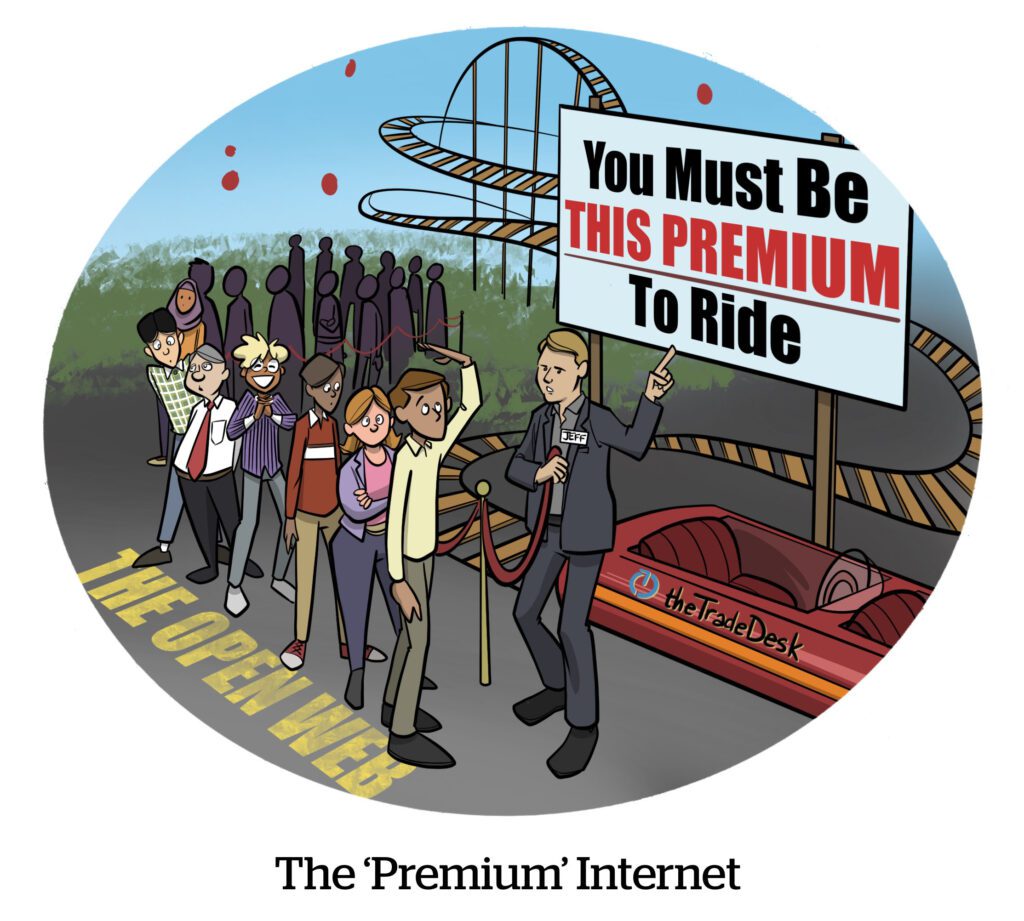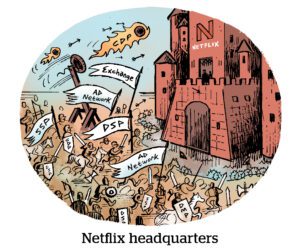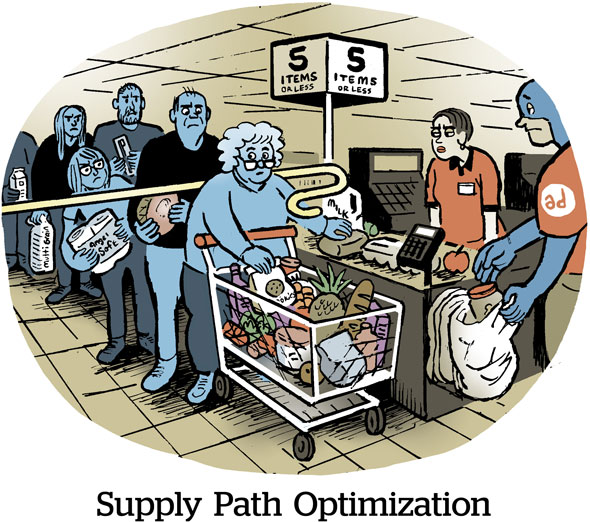The Trade Desk’s decision to release a list of the top 100 publishers on the open web has been the talk of the digital advertising industry for the past week.
Calling out the cream of the crop among media owners feels like a crystallization of The Trade Desk’s apparent pivot from champion of the open web to gatekeeper of the “premium internet.” And concerns about the list abound.
Publishers are already beset by brand safety blocklists and anti-MFA solutions, but now they’re worried The Trade Desk – the largest independent DSP – is placing another obstacle between them and ad budgets.
Meanwhile, buyers have been taking more control over how they’re curating private marketplaces (PMPs) in partnership with both DSPs and SSPs. Now, one of the most popular buying platforms is effectively taking back the reins on curation by naming which publishers it thinks are most deserving of ad dollars.
But how big of a deal is this list? And is it really a break from The Trade Desk’s longtime strategy of selling the open web? AdExchanger spoke to industry experts for their reactions to the list and bounced some of their hot takes off The Trade Desk.
Guidance for publishers
Two publisher sources who spoke to AdExchanger anonymously expressed dismay that they’re not on the list because it could cut them out of future deals. One of these sources said they anticipate having many internal conversations about how their company can get on the list.
Which is exactly what The Trade Desk wants to happen. The DSP has long been pushing publishers to focus on media quality, transparency and providing high-fidelity audience signals to advertisers, said Will Doherty, The Trade Desk’s VP of inventory development. Initiatives like the top 100 list scale up those efforts.
“The list is … meant to create conversation on what good looks like, what great looks like, why quality is important and that it has an impact on [where ad budgets go],” Doherty said.
And the list is a useful resource for publishers eager for more buy-side perspective on what constitutes high-quality inventory, said Ameet Shah, partner and SVP of publisher operations and strategy at Prohaska Consulting.
“So often, we see media company stats aggregated across publisher entities, but buyers are transacting against certain sites and not always an overall publisher network,” he said. “This [list] showcases what buyers are transacting upon, and provides an example to other publishers.”
While the list may motivate publishers who want to ascend its ranks, Doherty declined to get into specifics on The Trade Desk’s ranking rubric.
Though the DSP shared its general criteria for assessing media – which include the quality of the publisher’s content and ad experience, audience scale, and how efficient it is to buy the inventory programmatically – there’s still a lack of clarity around which of these factors weighed most heavily, said Kenneth Rona, co-founder of Chalice Custom Algorithms and an adviser to a number of ad tech startups.
And there were some surprises on the list that contradict the industry’s conventional thinking, Shah added. For example, he was surprised to see strong representation for news publishers, given the perception that advertisers don’t want to buy the news.
Pushing CTV
In addition to the number of news publishers represented, many commentators made note of the fact that the top 100 list was heavily populated with TV and CTV publishers and suggested it was a way for The Trade Desk to emphasize its familiar talking point that it’s now a CTV platform, too, not just a place to buy display ads.
Michael McCarver, SVP of data solutions and programmatic at ad agency Horizon Media, gave The Trade Desk its flowers for building a CTV business. But he suggested the DSP might be feeling pressure from chief rival Google’s recent attempts to shore up the programmatic side of YouTube ad buying, such as counting DV360 ad buys as part of upfront commitments and striking CTV partnerships to complement its YouTube inventory.
“It’s a way for The Trade Desk to differentiate themselves from DV360 by saying, ‘DV360 might be finally catching up on [the programmatic] pieces, but they have an uphill battle to catch up on [media] quality,’” he said.
The Trade Desk’s ranking criteria evaluates ad-to-content ratio. Doherty acknowledged that this may have increased the prevalence of CTV publishers among the top 100. You can’t exactly show TV viewers six ads at the same time like you can on a website. That means it’s easier for CTV platforms to top the list.
To PMP, or not to PMP?
Agencies have concerns about the top 100 ranking, too. The list struck a nerve with agencies because they see it as a threat to their own efforts at inventory curation, especially curation partnerships with SSPs, said one buy-side source who asked to remain anonymous.
While the top 100 list is not a programmatic product, The Trade Desk is beta testing the SP500+, a marketplace of high-quality media that will be available in its DSP as a buying tool.
“The original sin of programmatic was that the inventory was primarily expressed through pipes,” Doherty said. “Working back from the publishers, and [taking] the most efficient paths to those publishers in a low-complexity environment is the animating strategy behind SP500+,” he said.
But The Trade Desk’s own metrics of quality may not be for everyone.
Rona, who also founded a rival curation platform, SWYM, cautioned that marketers would be ill-advised to buy based on the list without a deeper understanding of which publishers are best suited to their campaign needs.
“It’s marketing material,” he said. “It’s like a US News and World Report, only instead of ‘Here are the best colleges,’ it’s ‘Here are the best websites.’”
Setting those concerns aside, marketers who want a simplified approach could end up using The Trade Desk’s lists as a de-facto curation solution. In that case, agencies could perceive SP500+ as a repudiation of a service they’re supposed to provide, he said.
But are agencies excelling in curation, anyway? Most agency attempts at curation have been, “frankly, half-assed,” said an industry consultant who asked to remain anonymous.
Agencies may actually want the help, instead of viewing this type of curation as competition.
“Agency curation sucks, because if you look at those Adalytics reports, we’re all getting caught up in this stuff [like MFA],” said an agency source who requested anonymity while critiquing their own company.
Buyers have nowhere near the level of insight into media quality that platforms like Google or The Trade Desk have, the agency source noted.
“If The Trade Desk wants to take this on, I’ll take that help all day.”
















